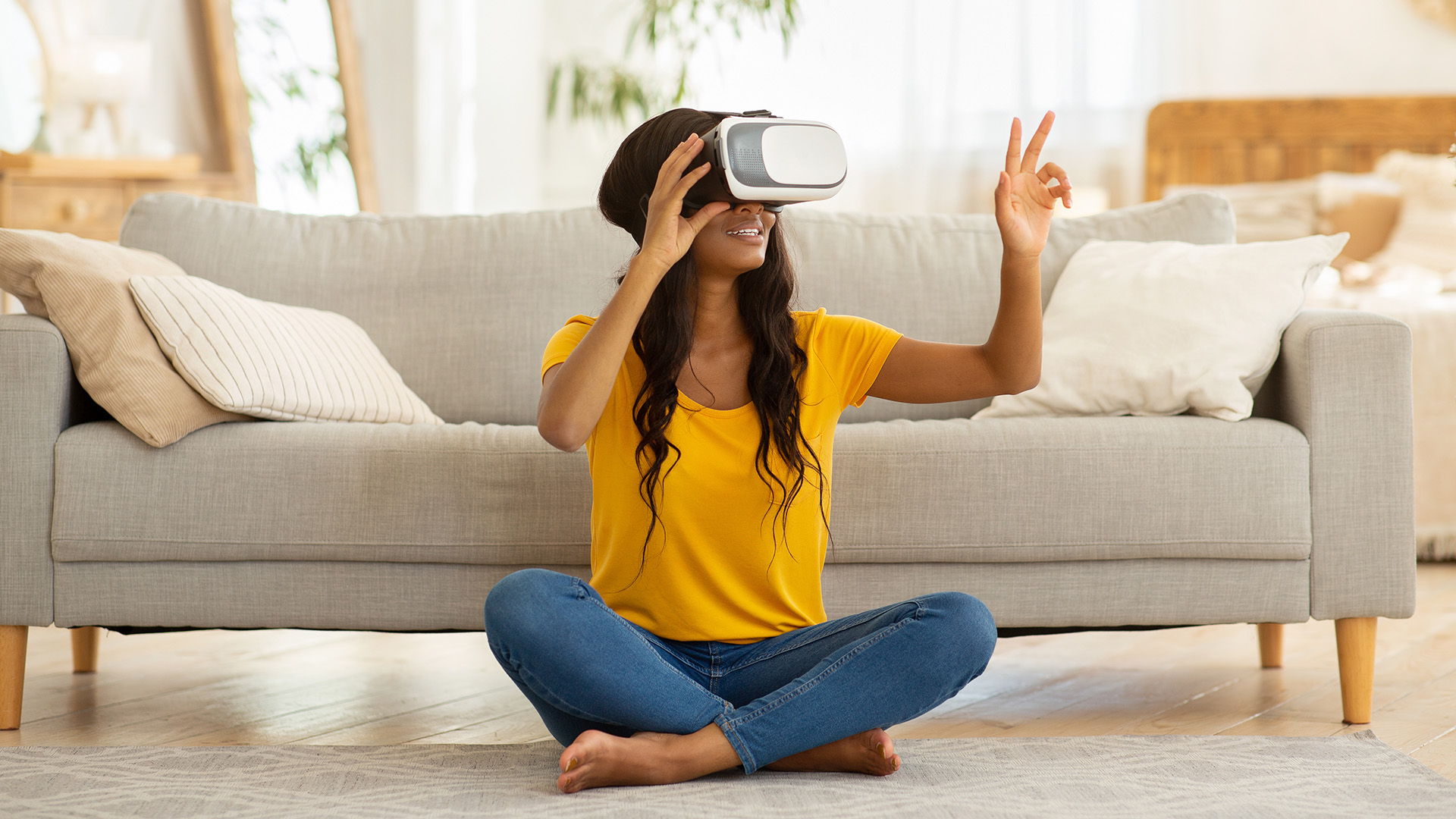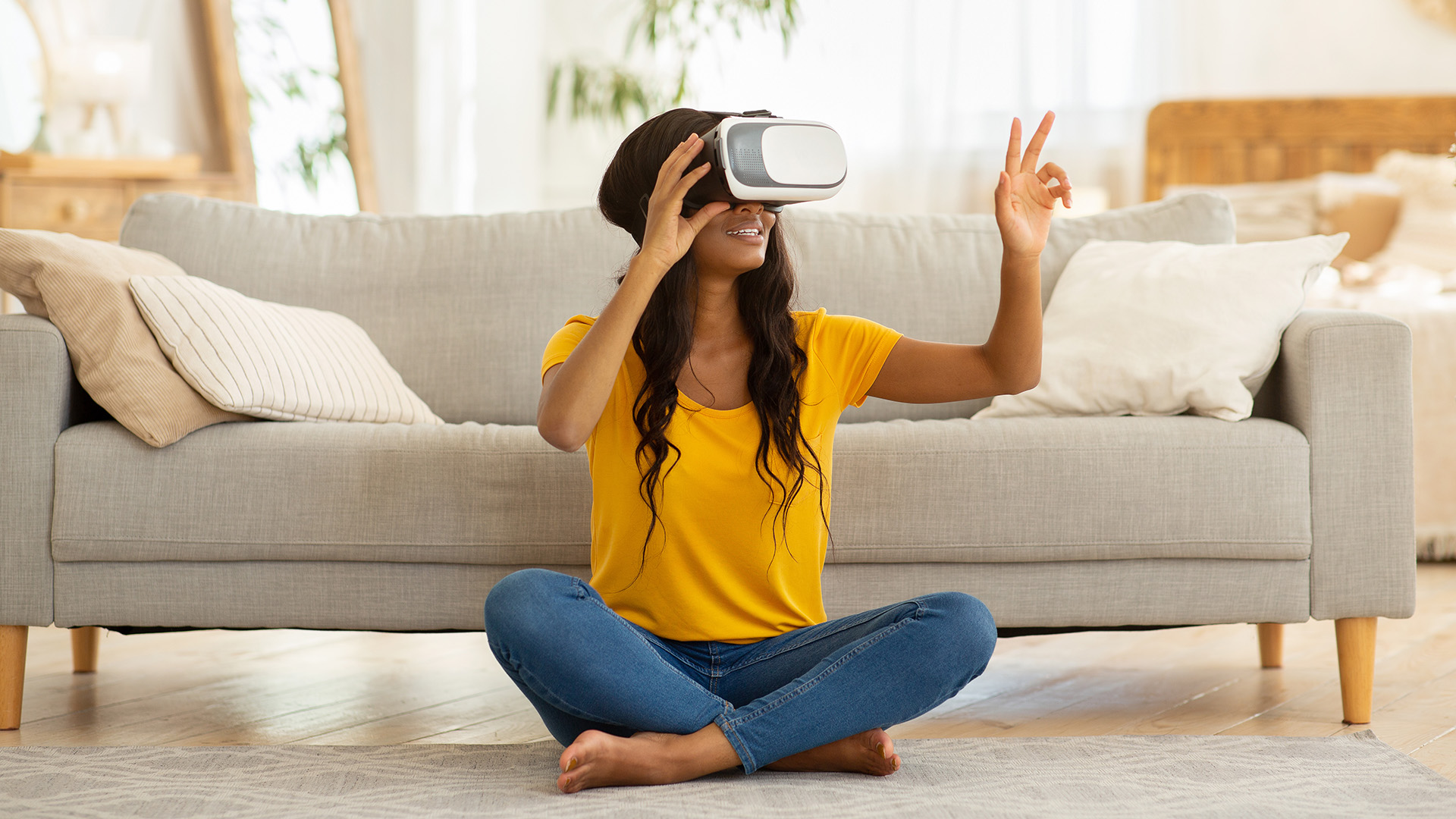

12
Apr
As the entire world races toward the finish line of the Covid-19 pandemic, setbacks are plentiful and fresh challenges are leaving many discouraged. Since now is the time to stay strong regarding social distancing and limiting outings, we want to take a close look at what VR at Home can offer.
What can fresh content or a new headset contribute to your wellbeing and productivity? Benefits can be as simple as making you happy. Coping with stress in your off-hours and staying on task while working is both critical and daunting. After all, weren’t you thinking you’d be done with covid-related restrictions by now?
We’ve been saying all along that this pandemic was going to be a multi-year marathon. And that technology can solve personal and societal problems. So, why not use the energy infusion you’re getting from spring renewal to revitalize your VR strategy as well?
Mental Health through VR at Home
More people are using meditation and mindfulness techniques – as well as new VR technology – these days, and we hope this trend continues.
So, one of the most important goals VR can help us achieve right now is a boost to mental health. The proven emotional impact of an immersive experience, combined with thoughtfully crafted meditation and relaxation content, is a tool all of us staying home can’t afford to ignore.
“A recent poll found that 50% of Canadians reported worsening mental health since the pandemic began with many feeling worried (44%) and anxious (41%). One in 10 Canadians polled said that their mental health had worsened ‘a lot’ as a result of COVID-19.” – CAMH
So, if you find yourself suffering from “brain fog” and depression, know that you’re not alone. This huge jump in people experiencing poor mental health, concurrent with a dramatic reduction in counseling and personal care services, means that creative solutions are called for.
VR at Home can be a huge win for anyone staying indoors, alone, experiencing anxiety and stress, while not able to avail themselves of traditional treatments. Take a look at our Top 5 Mental Health app picks for a few starting points.
VR at Home for Entertainment
Escaping personal and global troubles with a little digital diversion can be part of improving mental health. And luckily, massive libraries of VR games and interactive entertainment have accrued over the past handful of years. So, it’s time to cash in.
Browse marketplaces like STEAM to get an idea of what could really grab your brain, transporting you to another world. Spending some time outside this world via VR is always interesting, but lately, it can mean so much more.
If you’ve been missing the movie theatre experience, or just the simple fun of hanging out at a friend’s house for movie night, check out Bigscreen for the Oculus Quest 2. It’s by no means the only way to watch a movie virtually with friends, but it is one of the newest products out there.
VR at Home for Work
Professional applications of VR tools range from industrial design or prototyping to virtual medicine or psychotherapy. We know more fields of work will adopt VR in the post-pandemic years, simply because it’s necessary. Remote work changes are here to stay. If not to accommodate the many mental health or physical relocation changes that we won’t reverse with a vaccine, then for the environmental benefits of taking superfluous commuter cars off the road.
And certainly, the hangout element outlined in the entertainment section above can be applied to remote collaboration or just virtual meetings. Those of us burned out on Zoom, Facetime, Skype or whatever your video chat app of choice happens to be – they’re all just a little … impersonal. Even if it’s the only way you use VR at Home as part of your workday, a virtual meeting instead of a video call can be a refreshing change.
Education through VR at Home
Learning at home now ranges from elementary education all the way to industrial professional development. This can look like a class field trip happening through a shared VR outing. Or a flight simulation program that keeps a sidelined pilot trained and ready to (one day) return to work.
We love that VR is helping remote learners of all levels and subjects stay connected to each other, having meaningful experiences. But it’s important to also remember that using VR to learn is transforming the way society views this tech.
A student who uses Virtual Reality to complete their last year of high school will be better able to adopt VR in the workplace. And more likely use VR for entertainment. As in the case of entertainment and professional settings, the capacity to connect real people in an almost tangible way benefits learning too.
Reach Your Customers through VR
Depending on your industry, creating your own unique immersive content can be a great way to both reach and serve your customers. Whether you consider creating VR content as a stand-alone product or as a supplement to a product, it’s absolutely critical that you have it made professionally.
We also recommend keeping VR advertising on your radar. As the global user base continues to grow, as immersive content filters into many more parts of human life, opportunities to adapt your marketing to this environment will increase.
Advertising in immersive environments will need a practiced hand to get right. Consumers are smarter than ever when it comes to avoiding advertising, or really any content that seems obviously sponsored or influenced by an agenda. So, plan to work with a team of professionals if you want to create commercial content for VR at Home that you’ll either sell as a product or use as a marketing tool.
Your VR Visionaries
Stambol’s team of Virtual Reality experts has a strong foundation in both creating immersive content and using technology to innovate. These days, problem-solving takes a next-level ability to apply resourcefulness and knowledge. So, consider our team for your VR project, as well as any transformation assistance you may need.
Send your questions about how any of our technologies can launch a new era for your business, propelling you out of your 2020 slump and into the future.
Feature Image Credit: Prostock-studio / Adobe Stock





